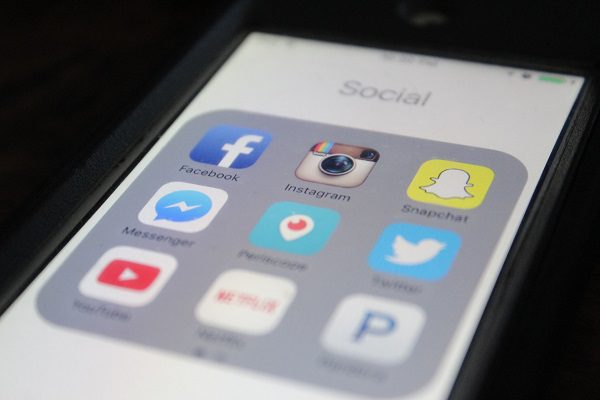Twenty or thirty years ago, the process of signing a new football player was simple. Talent scouts travelled far and wide to watch prospects in action on the pitch, taking their findings back to the club, who made their choices based on the notes from these outings.
Now, things are very different. Recruitment methods include hiring agencies like Cicero to produce social media reports on potential new signings, analysing their online presence over several years to judge their likelihood of having a Nicklas Bendtner or Joey Barton on their hands down the line.
It’s not just professional footballers who need to be wary. 70% of recruiters now use social media to screen prospective candidates – an increase of 10% on 2016’s figure. So how can candidates ensure that they don’t score a social media own goal when applying for new roles?
Mistake #1: CV says this, profile says that
With so much of our personal history now online, it can be easy for recruiters to discover when information shared on CVs and cover letters is less than completely true. In a 2011 survey by Reppler, results showed that lying about qualifications was the most commonly cited reason for social media-based candidate-rejections.
- You may like: Is your digital persona employable?
Facebook and Twitter histories can reveal a great deal about a candidate’s employment and education history. Ensuring the contents of a CV match up with timelines and profiles on LinkedIn and Facebook can reduce the likelihood of an individual’s background being called into question.
Mistake #2: Blurring the lines between personal and professional
When they began, the various social media channels had very different purposes. Twitter was originally conceived as an SMS-style platform for sharing status updates amongst friends. Facebook was a platform to connect university students. LinkedIn, historically, has always been about connecting employers and potential employees.
“Facebook offers businesses the chance to post highly targeted advertising.”
Fast-forward to 2017, and things have changed. Twitter’s popularity has boomed amongst business owners, with the likes of airline JetBlue amassing well over 2m followers. Facebook offers businesses the chance to post highly targeted advertising, and open direct conversations with customers. LinkedIn’s main purpose remains business connections – but we see more and more instances of jobseekers using it like Facebook, with inappropriate profile pictures, unprofessional updates and sharing controversial posts.
It’s easy for the lines between personal and professional to become blurred. Users need to think about the context in which they’re posting to avoid recruiters sending an instant rejection.
Mistake #3: Careless posting
Even something as simple as spelling and grammar can scupper a candidate’s chances of being hired. Jobvite’s 2014 Social Recruiting Survey revealed that 55% of recruiters have reconsidered a candidate based on their social profiles, with 61% of those reconsiderations being negative.
This rises to 66% for those with poor spelling or grammar, and 63% for those posting profanities. Rushing off slapdash posts when in a hurry or using a mild swear word may seem trivial at the time, but when a company is looking to hire a recruit who matches its values and culture, a little forethought can make all the difference.
Mistake #4: Inappropriate work-related comments
There have been several high profile cases of workers sacked from their jobs after inappropriate social media posts. Even if these posts remain undiscovered by employers and lay dormant for years, they can still be sniffed out by recruiters and used against job hunters.
Badmouthing former employers gives recruiters the sense that a candidate is unreliable, disloyal and lacking in professional discretion – not qualities that are likely to ensure progression to the interview stage.
Mistake #5: Failing to control your digital identity
Your digital identity allows recruiters to form a picture of your personality, your skills, your behaviours and your attributes before they even meet you. Twitter, LinkedIn, Facebook, Instagram and other social media sites all contribute to this picture: how constant is your digital identity across each site?
“There’s nothing wrong with profiles that demonstrate that you have a personality.”
There’s nothing wrong with profiles that demonstrate that you have a personality and a life outside of work, but if one site shows you as a quiet and conscientious individual and another as a party animal who’s out every night, the discrepancies will be questioned.
The future of social media for recruitment
In the near future, we predict a shift in the use of social media for recruitment, thanks to the advent of the General Data Protection Regulation (GDPR).
GDPR gives internet users the right to be forgotten, meaning that social media sites will be forced to remove old data and photos on request. Furthermore, employers and recruitment agencies will need to take great care when ‘snooping’ on social media sites, and using data to make decisions on whether a candidate is suitable for a particular role. Such snooping will only be allowed if there are legal grounds for doing so, if it is necessary for the role the candidate is applying for, if the applicant has been notified and if data protection laws are complied with.
Despite this, stories of new social media job hunting and recruitment strategies (via Tinder, for instance) are also coming to the fore.
Before applying for new roles, why not take a step back and view your digital presence through a recruiter’s eyes. Bring it together, and present yourself the way you need to be seen.

